5 Best AI Search Engines for 2026
Simran Kataria

AI is no longer a buzzword—it's a transformative force in modern marketing. From personalized emails to real-time ad optimization, artificial intelligence enables marketers to make smarter decisions, faster.
According to McKinsey, marketing is the business function with the highest potential for AI-driven value creation, with over 60 identified use cases that span customer targeting, content generation, and predictive analytics (source).
In simple terms, AI marketing leverages machine learning and automation to analyze massive datasets, predict behavior, and tailor experiences. Think of how Netflix recommends your next show—marketers are now using similar algorithms to deliver personalized content, offers, and messages across channels.
This article explores how AI is redefining marketing strategy—from foundational frameworks to real-world applications. If you're looking to stay ahead in a rapidly changing landscape, understanding AI marketing strategies is a must.
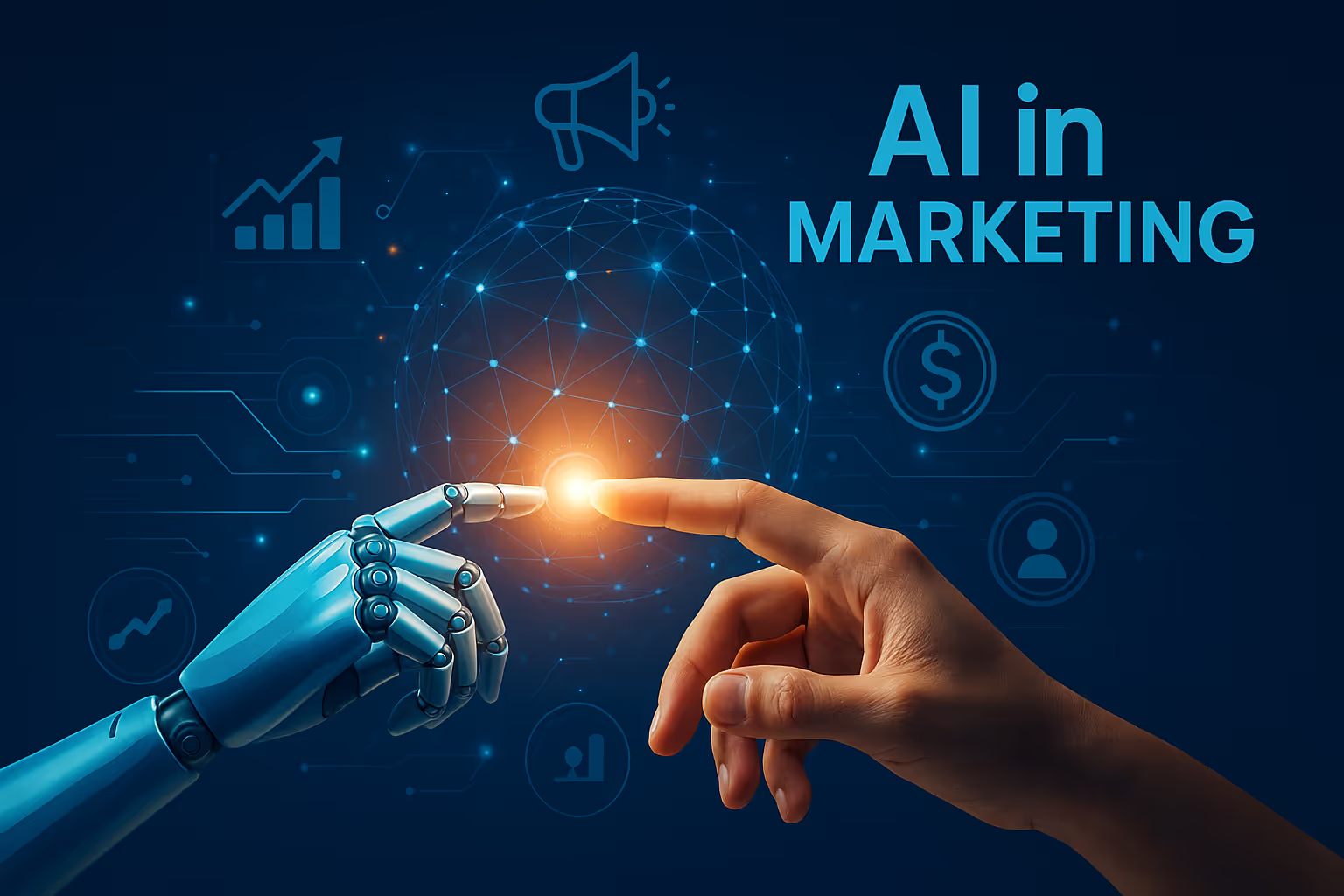
To fully leverage AI in marketing, it's essential to understand the foundational framework that guides its application. Two key dimensions define how AI is used in marketing: the level of intelligence (task automation vs. machine learning) and how it's deployed (stand-alone tools vs. integrated systems). These intersect to form four distinct categories of marketing AI.
Task automation involves rule-based systems designed to execute repetitive actions—like sending welcome emails or routing support tickets. These tools operate based on predefined logic and are ideal for simple, structured tasks.
Machine learning, on the other hand, uses large datasets to identify patterns, make predictions, and adapt over time. It's what powers recommendation engines, dynamic pricing, and predictive lead scoring. These systems are more flexible and deliver deeper insights by learning from past behavior.
Stand-alone AI applications operate independently of a business's core platforms. A good example is a basic chatbot on Facebook Messenger that responds to FAQs without syncing with your CRM.
Integrated AI applications are built directly into existing systems, like CRM or ad platforms, enhancing them with real-time intelligence. Netflix's recommendation engine or Salesforce's Einstein are classic examples—they work seamlessly within broader ecosystems.
By combining these two dimensions, we get four types of AI use cases:
As outlined in Harvard Business Review, marketers should start with low-complexity tools and gradually move toward more integrated and intelligent systems for maximum ROI (source).
Understanding where your tools fall in this framework can help prioritize investment, integration, and team readiness.
AI marketing isn’t just about automation—it’s about unlocking new levels of precision, personalization, and performance. When deployed effectively, artificial intelligence can significantly enhance both the efficiency and impact of your marketing efforts. Here are some of the key benefits.
AI enables real-time, data-driven personalization far beyond traditional demographic targeting. Instead of guessing what your customers want, AI tools analyze behavior, interests, and buying patterns to tailor messages and offers. A report by Salesforce found that 66% of consumers expect companies to understand their unique needs (source)—AI makes that expectation a reality.
AI streamlines repetitive and time-consuming tasks—like content generation, campaign testing, and performance reporting—allowing marketing teams to focus on strategic initiatives. For example, marketers using AI can generate multiple versions of an email in minutes, optimized for various segments and goals.

AI doesn’t just collect data—it interprets it. With predictive analytics, you can forecast customer behavior, identify at-risk customers, and uncover the best times and channels for engagement. This data-backed approach significantly improves campaign accuracy and outcomes.
AI algorithms continuously test and refine campaigns in real time, ensuring ad budgets are directed to the most effective channels. According to Accenture, one U.S. retailer saved over $300 million in media buying using AI-powered optimization (source).
AI-powered tools like recommendation engines and chatbots create seamless, personalized experiences that drive loyalty. Predictive churn models help businesses re-engage customers before they leave, giving brands a proactive retention edge.
As AI becomes more embedded in marketing workflows, the organizations that adopt early and strategically will find themselves miles ahead in both reach and relevance.
AI is transforming nearly every facet of the marketing function—from customer segmentation to creative production. Below are the most impactful ways AI is currently being applied across the marketing funnel.
Traditional segmentation often relies on static demographics. AI, however, enables dynamic segmentation based on real-time behavioral data, purchase history, and engagement patterns. Using machine learning, brands can now build micro-segments that adjust automatically as customer behavior evolves.
Tools like Optimove analyze customer data to create high-performing segments and even automate campaigns tailored to each group. This level of precision results in higher engagement and conversion rates.
AI is revolutionizing digital advertising through programmatic ad buying. Algorithms analyze countless data points—such as location, device, time of day, and past behavior—to serve ads to the right audience at the right time. This not only boosts performance but reduces wasted ad spend.
A compelling case: Harley-Davidson used Albert.ai to automate and optimize their ad strategy, resulting in a 2,930% increase in leads per month and a 5x increase in site traffic (source).
Marketers are under pressure to produce more content, faster. AI-powered tools like Jasper and ContentShake help generate blog posts, social captions, email copy, and even video scripts. These tools also optimize content for SEO by analyzing keyword usage, readability, and competitor strategies.
Content curation is another AI win. Platforms like Crayo and SurferSEO can recommend timely topics and content formats based on what’s trending within your industry.
AI enhances email marketing by determining the best time to send, ideal subject lines, and personalized messaging based on user behavior. For example, Mailchimp uses predictive analytics to determine the likelihood of a customer opening an email or making a purchase.
Automated personalization also powers campaign workflows, triggering follow-ups, discounts, or reminders based on real-time activity. This level of intelligence drives deeper engagement and higher lifetime value.
AI’s applications in marketing are broad and evolving. As tools become more intuitive and data-rich, marketers can expect even greater creative flexibility and targeting precision.
Predictive analytics is one of the most powerful applications of AI in marketing. By leveraging historical data and behavioral signals, machine learning models can forecast future actions—enabling marketers to plan smarter, act faster, and convert better.
AI-driven predictive lead scoring helps marketers identify which prospects are most likely to convert. Instead of relying on guesswork or manual scoring, AI evaluates data such as content engagement, CRM history, firmographics, and intent signals to rank leads in real time.
Platforms like Demandbase use AI to dynamically update lead scores based on behaviors like downloading whitepapers, attending webinars, or revisiting pricing pages. This ensures that sales teams focus on high-intent prospects.
One of the key advantages of predictive analytics is the ability to spot patterns that indicate customer dissatisfaction. AI models can monitor factors like declining engagement, reduced purchase frequency, and support ticket volume to flag customers at risk of churning.
With this insight, marketers can launch re-engagement campaigns—using email, retargeting, or loyalty incentives—before customers slip away.
Accurate sales forecasting has traditionally been difficult, especially in complex B2B environments. AI helps by analyzing past sales data alongside market trends, seasonal variations, and third-party intent signals to project revenue more accurately.
Retailers, SaaS platforms, and even financial service providers use predictive analytics to guide inventory management, staffing decisions, and marketing spend allocation.
AI also predicts how marketing campaigns are likely to perform—before they launch. Based on audience targeting, past campaign benchmarks, and current trends, predictive models can suggest optimal channels, formats, and timing for maximum ROI.
In short, predictive analytics enables a proactive rather than reactive approach to marketing—empowering teams to anticipate customer needs and optimize strategies before performance dips.
Conversational AI has become a cornerstone of modern customer engagement strategies. With 24/7 availability, instant responses, and the ability to handle thousands of interactions simultaneously, AI-powered chatbots are redefining how brands deliver support and guide purchase decisions.
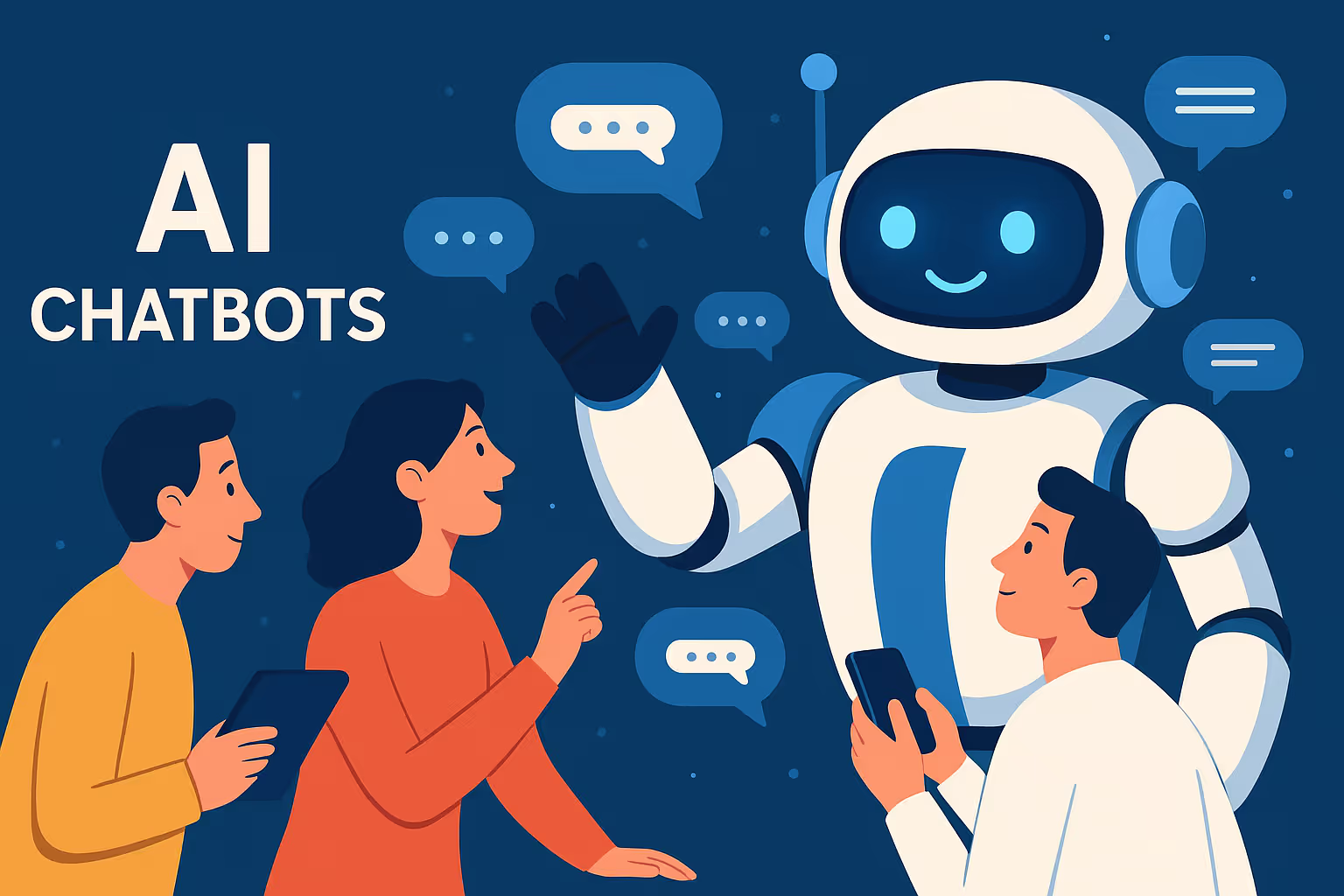
Basic chatbots used to frustrate users with rigid, scripted answers. Today’s AI-powered bots, however, are far more sophisticated. Built on large language models and neural networks, they can understand context, sentiment, and intent. This allows them to handle everything from answering FAQs to managing complex queries.
A leading example is Sephora’s virtual assistant, which provides tailored beauty recommendations based on customer preferences and interactions. The result? Faster resolutions, fewer abandoned carts, and more satisfied customers.
Beyond support, chatbots are now playing an active role in sales. They engage visitors browsing websites, qualify leads by asking key questions, and even route high-intent prospects directly to human reps. AI bots can also upsell and cross-sell by recommending related products based on browsing behavior and cart contents.
Companies like Drift and Intercom offer advanced conversational marketing platforms that integrate with CRMs, automatically syncing customer data and improving personalization over time.
AI chatbots don’t just live on websites. They’re deployed across SMS, WhatsApp, Facebook Messenger, and other channels, creating a consistent and scalable communication experience. This allows businesses to meet customers where they are—on the platforms they already use daily.
The benefits go both ways: marketers reduce support costs and increase lead qualification speed, while customers enjoy faster, more accurate assistance.
Understanding how customers feel about your brand, products, or campaigns is crucial for long-term growth. Sentiment analysis—a form of AI-powered natural language processing—helps marketers decode customer emotions at scale, turning unstructured feedback into actionable insights.
AI tools can scan thousands of social media posts, product reviews, and forum comments in real time, flagging emerging trends, recurring complaints, and customer praise. This allows marketers to respond proactively—correcting missteps or amplifying positive sentiment as it happens.
Platforms like Brand24 and Talkwalker use sentiment analysis to assign emotional weight to online mentions. This insight goes beyond basic metrics like likes or shares, helping brands understand the true perception of their messaging and customer experience.
Customers interact with businesses across multiple touchpoints—from emails and live chats to surveys and support tickets. AI tools consolidate and analyze these interactions to identify patterns in customer satisfaction or dissatisfaction.
For example, if support tickets show an uptick in complaints about a new feature, sentiment analysis can pinpoint the exact pain points and help prioritize product fixes or messaging adjustments.
Sentiment analysis doesn’t just gauge overall mood; it can segment customer feedback by persona, industry, or buying stage. This enables hyper-targeted strategies—for example, tailoring messaging to hesitant leads, while reinforcing loyalty among promoters.
In B2B environments, AI can even detect sentiment shifts among decision-makers across accounts, helping sales teams adapt their approach in real time.
By incorporating sentiment analysis into your marketing strategy, you gain a continuous pulse on customer emotion—an often overlooked metric that can make or break engagement and brand trust.
Pricing isn’t static—and in today’s competitive landscape, setting the right price at the right time can be the difference between closing a deal or losing a customer. AI-driven dynamic pricing models help businesses respond to market fluctuations, competitor actions, and customer behavior in real time.
AI tools can continuously track pricing trends, inventory levels, and competitor offers across the web. This data is then fed into algorithms that adjust your product prices automatically to stay competitive while preserving profit margins.
For example, Amazon’s pricing engine changes prices as often as every 10 minutes based on demand, user behavior, and competitor activity. It’s one of the reasons the company maintains dominance in e-commerce.
AI doesn’t just look outward—it also analyzes individual customer behavior to offer personalized pricing or discounts. This could include offering a loyalty-based discount to a repeat buyer or applying urgency-based pricing when demand spikes.
SaaS companies, in particular, are leveraging AI to tailor enterprise package pricing based on firmographics, buying history, and account engagement data. This ensures each customer sees the most relevant offer, improving conversion rates.
With historical data and seasonal patterns, AI can forecast demand and recommend pricing strategies that balance inventory, revenue, and profit. This is especially useful for industries with variable demand—like travel, retail, or event ticketing.
Dynamic pricing models also help manage promotions. AI determines the optimal timing and depth of discounts to clear inventory without eroding brand value or profitability.
When applied strategically, smart pricing doesn’t just boost revenue—it enhances the customer experience by aligning price with perceived value and intent.
A/B testing is a staple of digital marketing, but traditional methods can be slow, limited in scope, and heavily reliant on manual analysis. AI changes the game by scaling experimentation across multiple variables and automating the optimization process in real time.
Instead of testing one variable at a time, AI-powered tools can simultaneously test multiple elements—headlines, images, CTAs, layouts—and identify the highest-performing combinations much faster. This multivariate approach accelerates learning cycles and eliminates guesswork.
Tools like Google Optimize and Adobe Target use AI to serve dynamic experiences based on visitor behavior, demographics, and engagement patterns, adjusting variables automatically to maximize results.
Unlike static A/B tests, AI-based experimentation evolves as data is collected. Algorithms reallocate traffic to better-performing versions on the fly, improving results while tests are still running. This means marketers no longer have to wait weeks to declare a “winner.”
This is particularly effective for high-traffic pages, seasonal campaigns, or limited-time offers—where speed and adaptability are crucial.
AI doesn’t treat all traffic equally. It can segment test audiences by geography, device, behavior, or referral source, then personalize the experience accordingly. What works for a returning mobile user in London may differ from a first-time desktop visitor in Chicago.
Platforms like Dynamic Yield allow marketers to run these segmented tests at scale, delivering personalized UX variations that drive better engagement across the funnel.
AI-powered experimentation empowers teams to make decisions based on evidence, not opinion—leading to smarter, faster, and more impactful marketing strategies.
Expanding into global markets presents both opportunities and challenges. Language barriers, cultural nuances, and inconsistent messaging can make international marketing complex. AI helps bridge these gaps, enabling brands to scale their campaigns across languages and regions without compromising quality or impact.
Traditional translation tools often fall short when it comes to marketing content. AI-powered systems, trained on vast linguistic datasets, go beyond literal translation. They adapt tone, phrasing, and context—preserving brand voice and intent across languages.
Platforms like DeepL and Google's AI translation models are increasingly used to localize content for web pages, email campaigns, and social media posts. They recognize idiomatic expressions and adjust wording to align with regional speech patterns.
AI tools can tailor messaging not just by language, but by cultural preferences, consumer behavior, and even local buying habits. This allows brands to resonate with specific markets while maintaining a unified global strategy.
For example, a campaign that emphasizes convenience in the U.S. might shift to highlight product quality in Germany, based on local value systems. AI platforms like Unbabel and Smartling help facilitate these nuanced adjustments quickly.
Maintaining brand consistency across global campaigns is critical. AI ensures that all translated and localized content adheres to style guides, terminology preferences, and tone-of-voice guidelines. Some tools even offer real-time style checks and automated approvals to reduce review bottlenecks.
For teams managing dozens of regions, this capability ensures every customer experiences the same brand story—no matter where they are.
With AI handling the heavy lifting of multilingual campaign management, marketers can focus on strategy, storytelling, and regional growth without being bogged down by operational complexity.
Implementing AI in marketing isn’t just about choosing the right tools—it’s about aligning technology with clear goals, data readiness, and team capability. This step-by-step guide outlines how to roll out AI strategically for lasting impact.
Start by identifying the specific marketing challenges you want AI to solve. Are you looking to improve lead quality? Increase conversion rates? Reduce campaign costs? The more precise your objectives, the easier it will be to select and evaluate tools that align with them.
Set measurable KPIs tied to business outcomes—for example, "increase email open rates by 20%" or "reduce customer acquisition cost by 15%."
AI thrives on data. Conduct a thorough audit of your CRM, marketing automation platforms, analytics tools, and content repositories. Identify gaps in data quality, integration, and consistency.
Standardize data formats and clean outdated or duplicate entries. If your systems are fragmented, consider integrating them using platforms like Segment or Zapier.
Look for tools that match your goals and integrate well with your existing stack. Prioritize ease of use, scalability, and strong support. Start small—perhaps with a tool that automates lead scoring or email personalization—and expand as your team gains confidence.
Popular platforms include Jasper (content creation), SurferSEO (SEO optimization), and Demandbase (account-based marketing and lead scoring).
AI tools are only as effective as the people using them. Provide hands-on training, workshops, or certifications to help your team understand how to operate, interpret, and act on AI-generated insights.
Encourage a culture of experimentation. Marketers who understand the “why” behind AI outputs can make smarter strategic decisions.
Choose one high-impact use case and test a tool in a controlled environment. For example, run a predictive lead scoring pilot for a specific campaign or use an AI chatbot on a single landing page.
Monitor performance closely, collect feedback, and make adjustments before expanding AI usage more broadly.
Once the pilot succeeds, roll out AI to other marketing functions. Continue measuring performance, comparing against your original KPIs, and fine-tuning models. AI is iterative—the more data it receives, the more accurate and effective it becomes.
Ensure all AI applications comply with data privacy laws like GDPR or CCPA. Use transparent data policies and consider creating an ethics review board for high-stakes AI use cases—especially those involving customer data or personalization algorithms.
Taking a phased, strategic approach ensures AI enhances—not disrupts—your marketing operations. Done right, AI becomes not just a tool, but a growth engine.
While AI offers powerful capabilities, it’s not without pitfalls. Implementing AI in marketing requires careful planning to avoid common challenges that can stall progress or damage trust. Here are the key risks marketers must navigate.
AI relies on collecting and processing vast amounts of customer data. This creates significant privacy and compliance challenges—especially with regulations like GDPR and CCPA imposing strict standards on data use.
Marketers must ensure AI tools encrypt sensitive data, anonymize personally identifiable information, and provide transparent opt-in mechanisms. Non-compliance can lead to fines and loss of consumer trust.
AI systems are only as unbiased as the data they’re trained on. If your training data reflects societal biases—such as underrepresenting certain customer groups—the AI’s outputs can reinforce those biases in targeting or personalization.
To mitigate this, marketers should regularly audit AI models, use diverse data sets, and involve cross-functional teams in tool selection and testing.
Many businesses still rely on fragmented, outdated marketing systems. Integrating modern AI platforms with legacy CRMs, CMSs, or analytics tools can be complex and costly. Without a unified data infrastructure, AI tools may underperform or produce inaccurate insights.
A gradual approach—starting with isolated use cases and expanding as infrastructure improves—is often more effective than attempting an all-at-once overhaul.
While many AI tools offer subscription pricing, advanced platforms often require upfront investments in software, consulting, and training. For smaller businesses, this cost barrier can delay adoption.
Mitigate this by prioritizing AI tools with immediate ROI, such as content generation or predictive lead scoring, and scaling over time.
AI excels at efficiency—but it can also make interactions feel impersonal if overused. Automated responses that miss emotional cues or fail to resolve unique issues can frustrate users and hurt brand perception.
To avoid this, combine AI with human oversight. Let automation handle routine tasks, while humans focus on empathy-driven interactions, strategy, and storytelling.
When AI is used responsibly, it becomes a valuable co-pilot for marketers—not a replacement. Awareness of these risks ensures the technology is applied ethically, effectively, and sustainably.
AI marketing isn't just theory—it’s delivering measurable results for some of the world’s most successful brands. These real-world case studies highlight how companies are using AI to boost performance, personalize experiences, and grow revenue.
Netflix’s recommendation engine is a textbook example of AI-driven personalization. Using viewing history, preferences, and user behavior, the platform curates custom content feeds for each subscriber. According to the company, over 80% of watched content comes from these personalized suggestions (source). This AI-powered system not only keeps users engaged but significantly reduces churn.
In its “Create Real Magic” campaign, Coca-Cola partnered with OpenAI and Bain & Company to use tools like GPT-4 and DALL·E to crowdsource brand-inspired visuals from creators around the world. This AI-powered platform produced thousands of unique artworks, revitalizing Coca-Cola’s brand image with minimal human input while staying consistent across global markets (source).
Sephora launched a virtual assistant that delivers product recommendations, beauty tips, and personalized shopping guidance. By analyzing customer preferences and purchase history, the AI chatbot enhances user experiences while reducing support load. The tool led to a notable increase in conversion rates on digital channels, especially among mobile users.
Amazon’s recommendation engine leverages AI to analyze customer behavior, search history, and preferences. This predictive model influences everything from homepage displays to email offers—and it works. Up to 35% of Amazon’s revenue is driven by its recommendation engine (source).
AI in marketing is evolving rapidly. What was once cutting-edge—like basic chatbots or automated emails—is now standard. Looking ahead, the future promises more sophisticated and emotionally intelligent tools that will reshape how brands connect with audiences.
One emerging trend is emotion recognition, where AI analyzes facial expressions, tone of voice, or word choice to gauge a user’s emotional state. This technology enables brands to tailor experiences in real time based on how customers feel—not just what they do.
For instance, future chatbots might detect frustration in a customer’s tone and adjust responses accordingly, or marketing platforms could optimize content based on sentiment trends during a product launch.
As devices become more connected—from wearables to smart appliances—AI will integrate deeper into consumers' everyday lives. Marketers can use data from IoT devices to deliver hyper-contextual messages.
Imagine your fitness app recommending a hydration brand after a workout, or a smart fridge triggering a grocery offer just before you run out of a product. These real-time, data-driven interactions are becoming possible with AI and IoT convergence.
With the rise of smart assistants like Alexa and Siri, voice search is growing fast, requiring marketers to optimize content for conversational queries. AI tools will play a vital role in helping businesses adapt their SEO strategy accordingly.
Similarly, visual search—powered by AI image recognition—lets users search by uploading photos instead of typing keywords. Retailers, in particular, are investing in tools that help customers find products simply by snapping a picture.
AI is beginning to automate not just tasks, but entire strategies. Future platforms could act as autonomous marketing agents—planning, executing, and optimizing multichannel campaigns with minimal human input.
These agents will continuously learn from user interactions, competitor behavior, and market dynamics to refine messaging, timing, and targeting—essentially acting as always-on digital marketers.
As AI becomes more powerful, customers will demand more transparency and control over how their data is used. Brands that prioritize ethical AI practices—such as explainability, fairness, and opt-in data models—will stand out.
Expect to see more marketing teams working closely with legal and compliance teams to vet AI tools and establish governance protocols for responsible deployment.
The future of AI marketing is not just about automation—it’s about intelligence, empathy, and agility. Staying ahead means not only adopting new tools, but adapting to new expectations.
Choosing the right AI tools can dramatically boost your marketing efficiency and performance. In 2025, a wide range of platforms have emerged to support everything from content creation to predictive analytics and automation. Here are some of the most effective AI marketing tools in use today.
Gumloop is gaining rapid traction as a powerful AI automation tool. It connects large language models (LLMs) like GPT-4 with your internal workflows, enabling marketers to build intelligent automations without coding. Used by teams at Webflow, Shopify, and Instacart, Gumloop offers built-in LLM access, continuous agents, and no-code workflow design—ideal for automating repetitive marketing tasks.
Surfer SEO helps marketers create search-optimized content by analyzing top-ranking pages. It offers keyword suggestions, content outlines, and real-time SEO scoring. The tool integrates with Google Docs and WordPress, making it easy to improve organic performance directly in your writing environment.
Jasper is a robust AI copywriting tool that supports multiple formats, including ads, blog posts, landing pages, and emails. It's ideal for content teams looking to scale production while maintaining consistent brand voice. Jasper is known for producing high-quality drafts that require minimal editing.
Crayo specializes in short-form video creation for platforms like TikTok and YouTube Shorts. Designed by top YouTubers, it helps marketers ideate, script, and produce videos that are engineered to go viral—making it a valuable asset for social media teams.
Powered by Semrush data, ContentShake AI generates SEO blog posts in multiple languages. It suggests trending topics, creates outlines, and optimizes posts for readability and search visibility. The tool also adapts your tone based on uploaded writing samples.
Albert is a fully autonomous platform that optimizes paid media across channels like Google, Facebook, and YouTube. It uses machine learning to adjust bids, test creatives, and reallocate budget in real time, delivering better ROI with less manual oversight.
Demandbase is ideal for B2B teams using account-based marketing (ABM). It scores leads based on intent data, engagement signals, and firmographics. It also personalizes messaging for decision-makers across the buying journey, improving conversion rates and shortening sales cycles.
Drift uses AI chatbots to qualify leads and start sales conversations in real time. It’s fully integrated with CRM systems and offers dynamic conversation flows that guide visitors toward conversion.
These tools represent the current frontier of AI marketing—each helping teams work smarter, not harder. Choosing the right mix based on your goals can unlock serious performance gains.
AI marketing is the use of artificial intelligence technologies like machine learning, natural language processing, and predictive analytics to enhance marketing efforts. It automates tasks, analyzes large datasets, and helps marketers deliver more personalized, data-driven campaigns across channels.
AI increases return on investment by optimizing ad spend, improving lead quality, personalizing content, and automating manual tasks. For example, AI tools can identify the most effective messaging, timing, and channels, which helps maximize conversions while minimizing costs.
Yes, many AI tools offer tiered pricing or free plans for small businesses. Platforms like Jasper, SurferSEO, and Chatfuel provide cost-effective solutions that can scale as your business grows. Starting with a single use case—like email personalization or content optimization—can yield quick wins.
AI enhances human capabilities but doesn’t replace them. While AI can automate repetitive tasks and provide insights, human marketers are still essential for strategy, creativity, emotional intelligence, and ethical oversight. The most successful teams blend AI with human judgment.
Begin by identifying your marketing challenges—whether it's lead scoring, content creation, or campaign optimization. Then evaluate tools based on usability, integrations, pricing, and reviews. Start with a pilot program and expand based on results.
Avoid over-automating without human oversight, underestimating data requirements, or neglecting compliance with privacy laws. It's also important not to treat AI as a “set and forget” tool—continuous monitoring and optimization are key to success.
AI is no longer optional—it’s a strategic necessity. From personalized customer journeys to real-time campaign optimization, AI marketing strategies are helping brands drive better results, faster. But success doesn’t come from technology alone—it comes from thoughtful implementation, clear goals, and a balance between automation and creativity.
As marketing continues to evolve, companies that invest in AI early—and wisely—will have a clear advantage in agility, efficiency, and customer connection.
If you're looking to implement cutting-edge AI strategies in your marketing or need expert guidance on digital transformation, consider partnering with Ballistic Design Studio. Their team specializes in leveraging AI and automation to elevate brand experiences and deliver measurable results.

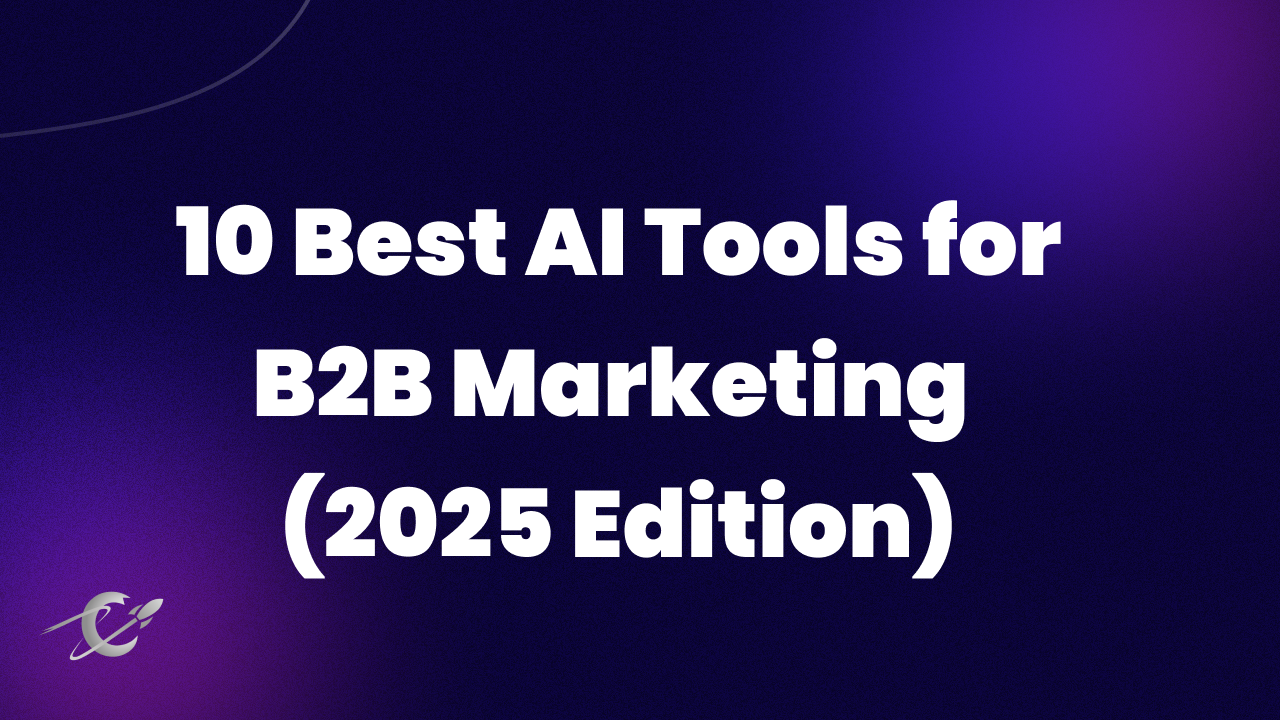
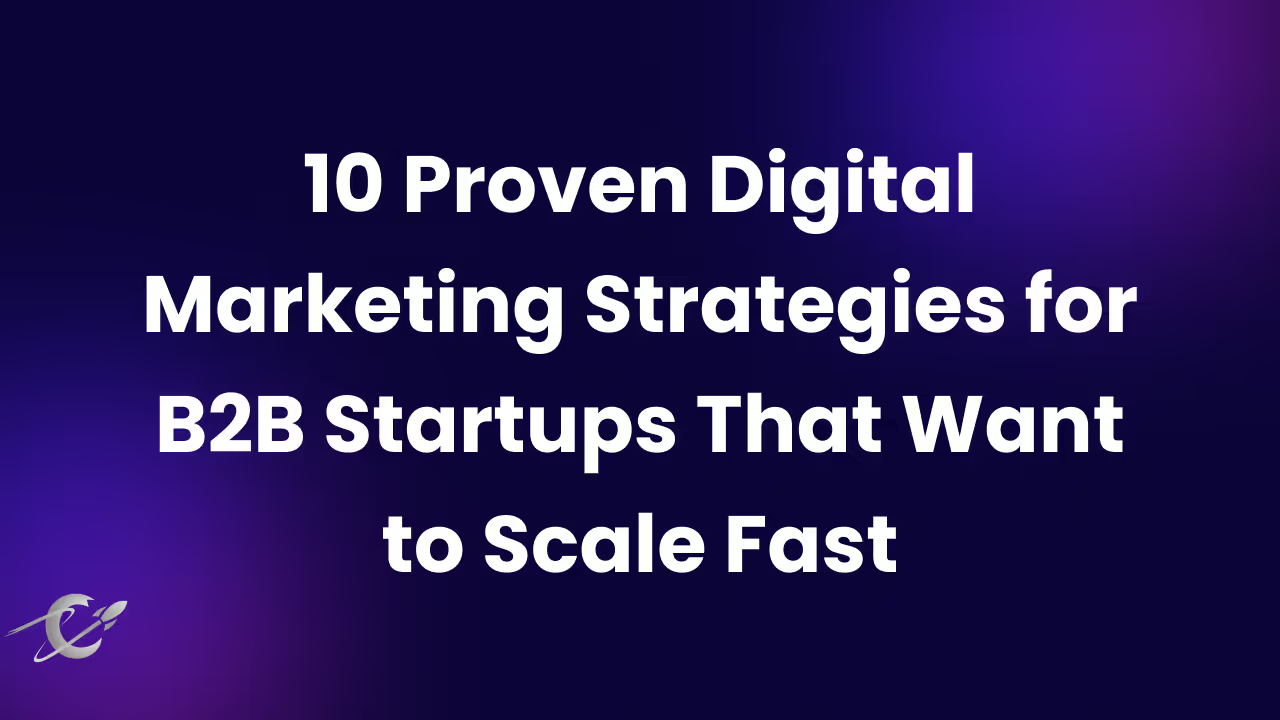
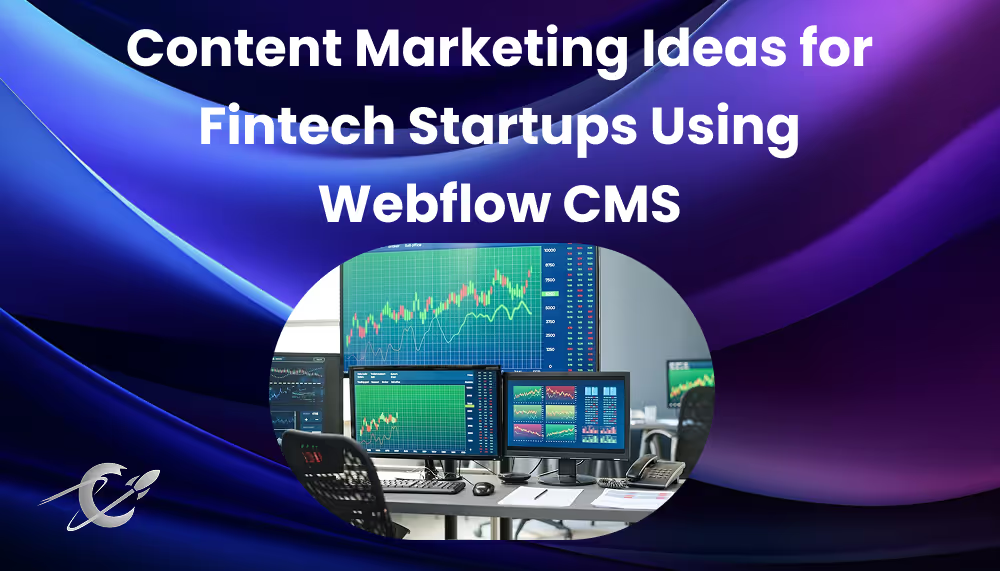
Only valid for-